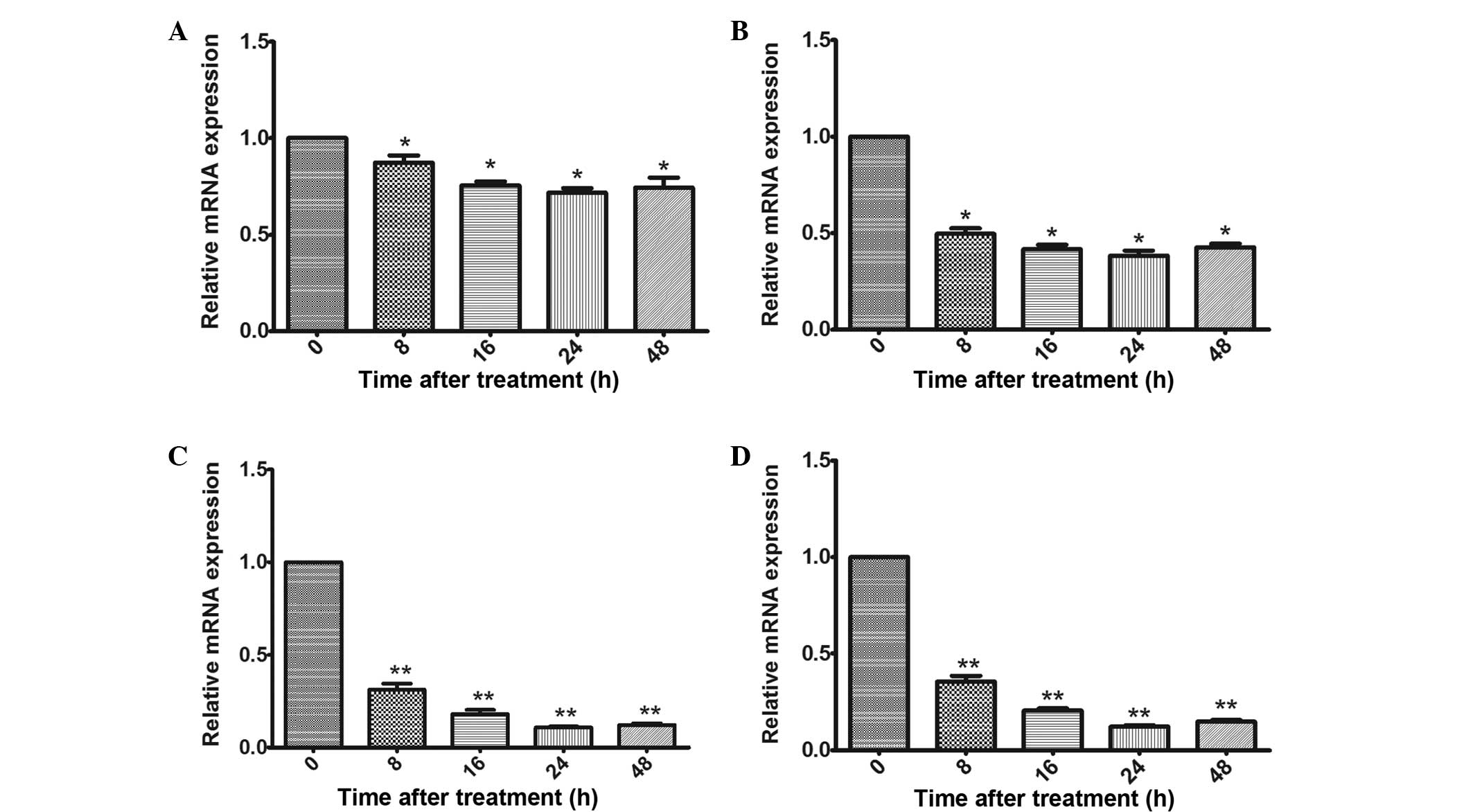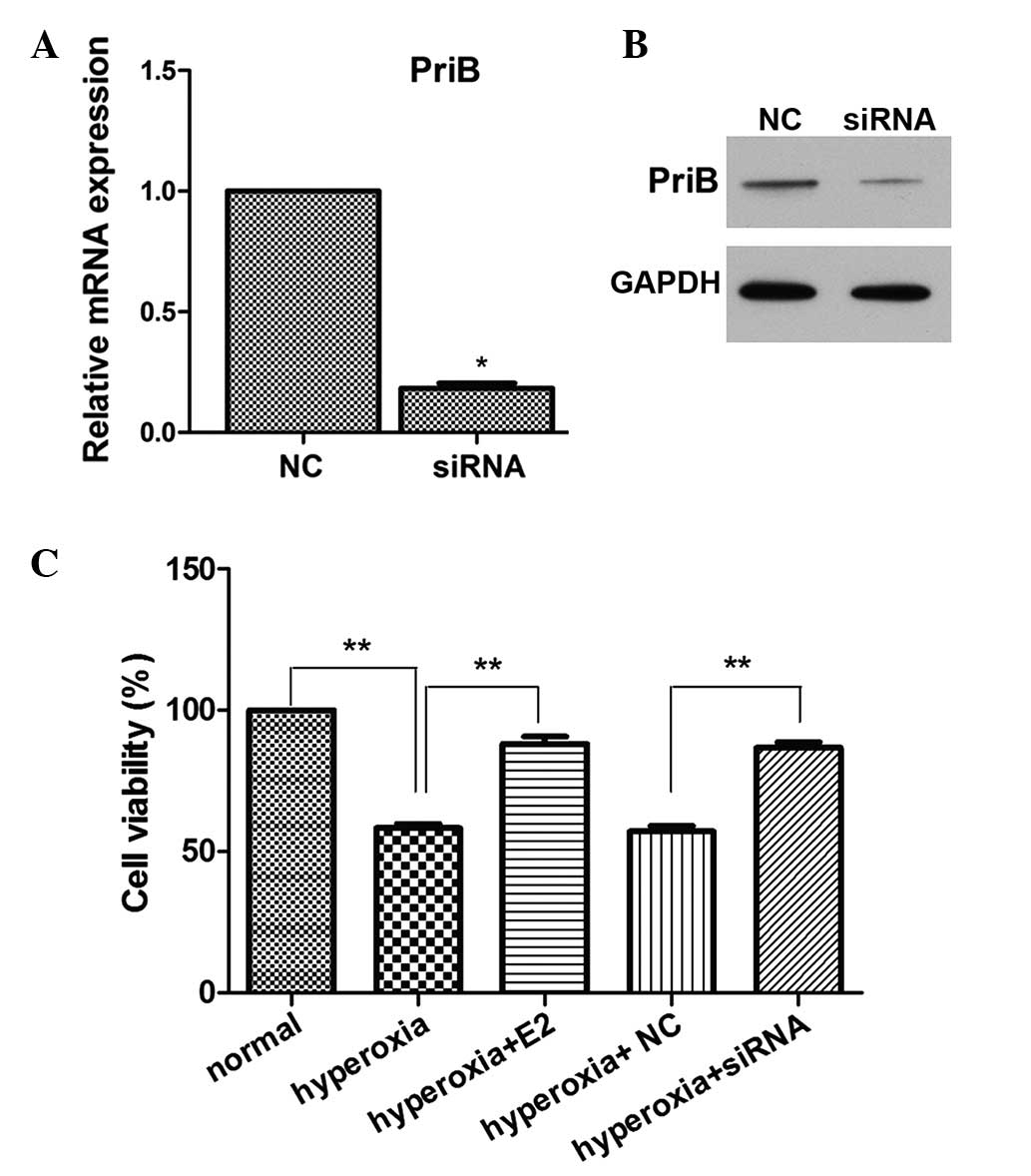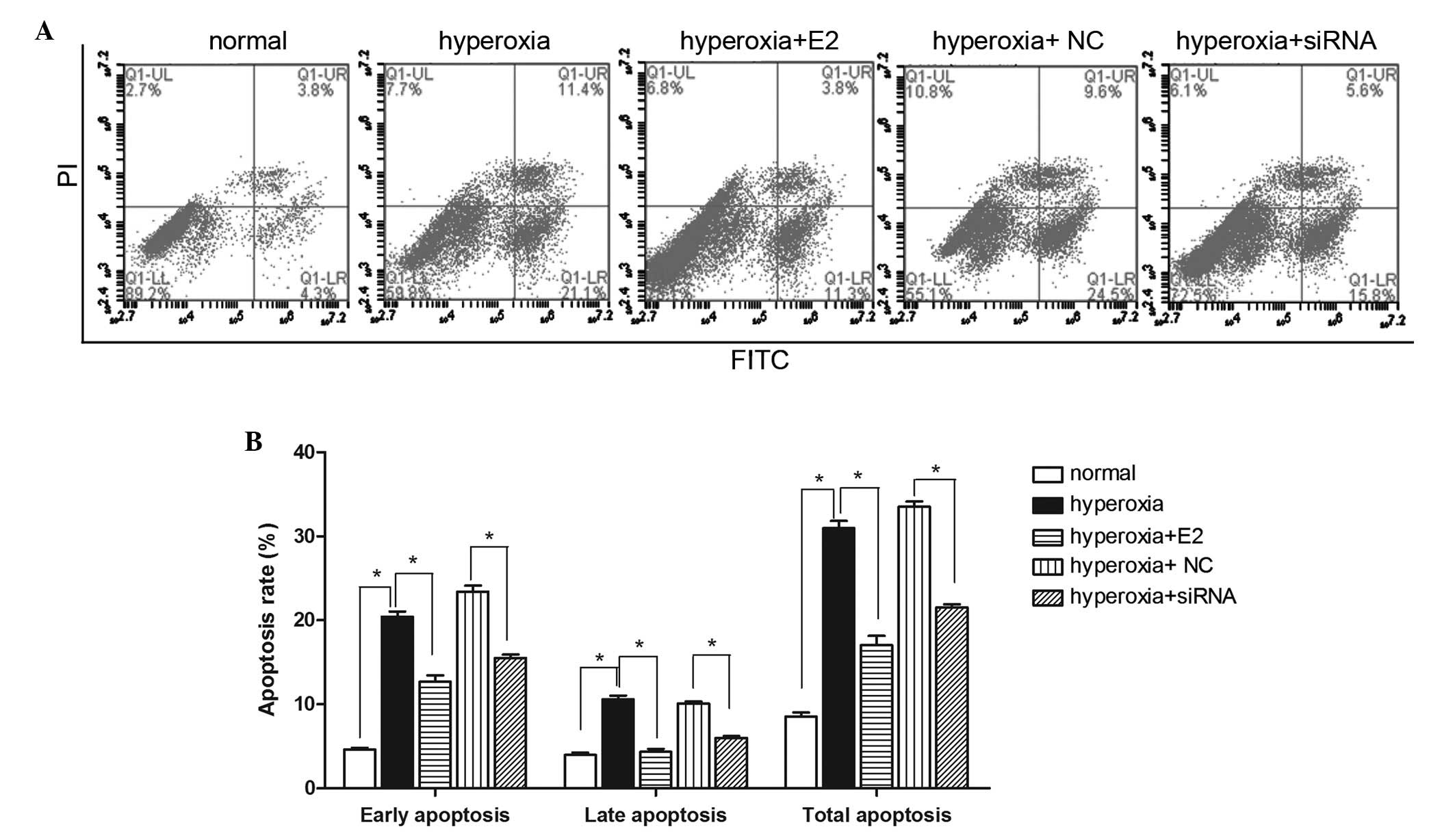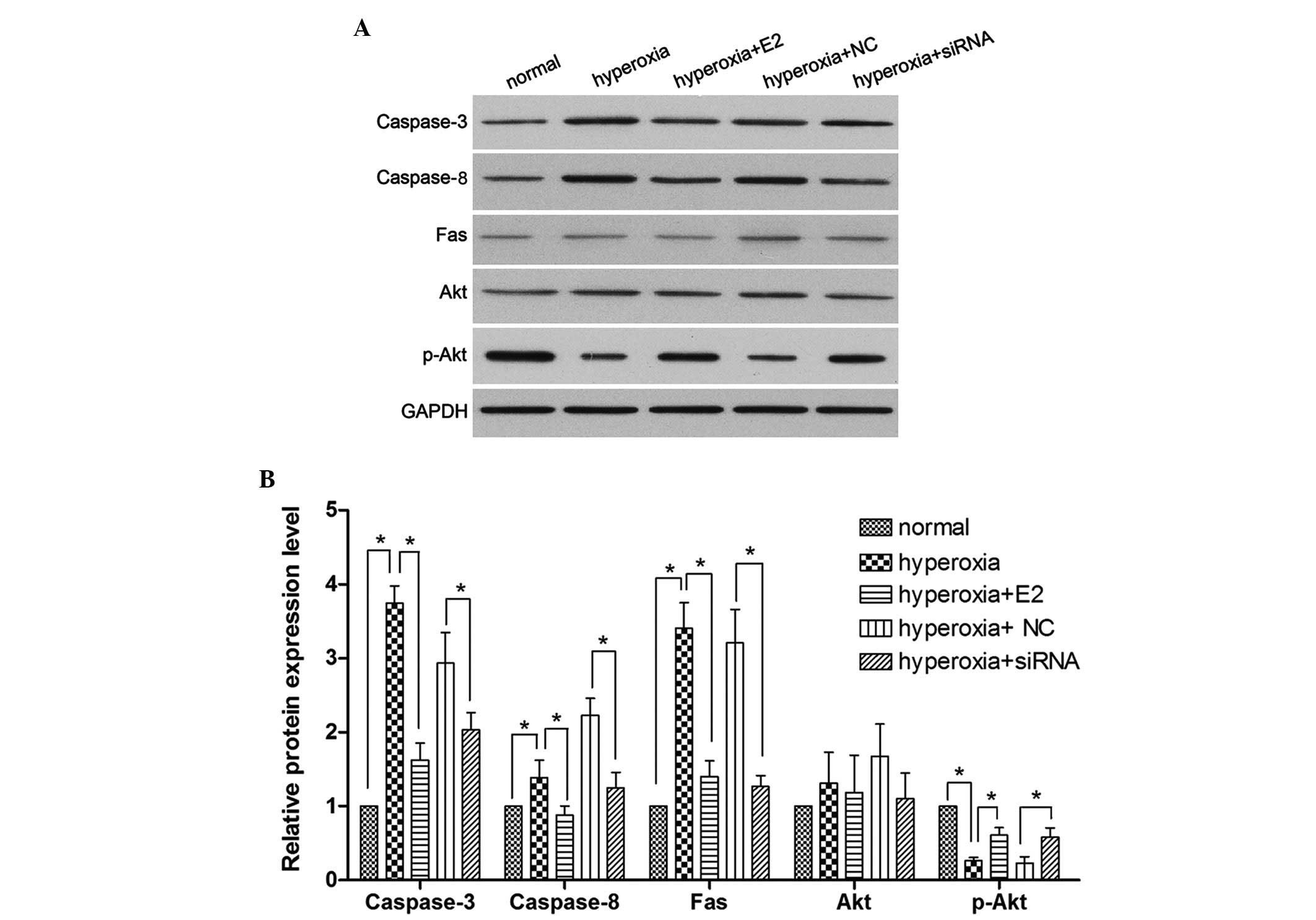|
1
|
Broitman E, Ambalavanan N, Higgins RD,
Vohr BR, Das A, Bhaskar B, Murray K, Hintz SR and Carlo WA;
National Institute of Child Health and Human Development Neonatal
Research Network: Clinical data predict neurodevelopmental outcome
better than head ultrasound in extremely low birth weight infants.
J Pediatr. 151:500–505. 505.e1–2. 2007. View Article : Google Scholar : PubMed/NCBI
|
|
2
|
Neubauer AP, Voss W and Kattner E: Outcome
of extremely low birth weight survivors at school age: The
influence of perinatal parameters on neurodevelopment. Eur J
Pediatr. 167:87–95. 2008. View Article : Google Scholar
|
|
3
|
Auten RL, Mason SN, Auten KM and
Brahmajothi M: Hyperoxia impairs postnatal alveolar epithelial
development via NADPH oxidase in newborn mice. Am J Physiol Lung
Cell Mol Physiol. 297:L134–L142. 2009. View Article : Google Scholar : PubMed/NCBI
|
|
4
|
Dorfman A, Dembinska O, Chemtob S and
Lachapelle P: Early manifestations of postnatal hyperoxia on the
retinal structure and function of the neonatal rat. Invest
Ophthalmol Vis Sci. 49:458–466. 2008. View Article : Google Scholar : PubMed/NCBI
|
|
5
|
Londhe VA, Sundar IK, Lopez B, Maisonet
TM, Yu Y, Aghai ZH and Rahman I: Hyperoxia impairs alveolar
formation and induces senescence through decreased histone
deacetylase activity and upregulation of p21 in neonatal mouse
lung. Pediatr Res. 69:371–377. 2011. View Article : Google Scholar : PubMed/NCBI
|
|
6
|
Ramani M, Van Groen T, Kadish I, Bulger A
and Ambalavanan N: Neurodevelopmental impairment following neonatal
hyperoxia in the mouse. Neurobiol Dis. 50:69–75. 2013. View Article : Google Scholar :
|
|
7
|
Vottier G, Pham H, Pansioot J, Biran V,
Gressens P, Charriaut-Marlangue C and Baud O: Deleterious effect of
hyperoxia at birth on white matter damage in the newborn rat. Dev
Neurosci. 33:261–269. 2011. View Article : Google Scholar : PubMed/NCBI
|
|
8
|
Sosa MA, De Gasperi R, Paulino AJ, Pricop
PE, Shaughness MC, Maudlin-Jeronimo E, Hall AA, Janssen WG, Yuk FJ,
Dorr NP, et al: Blast overpressure induces shear-related injuries
in the brain of rats exposed to a mild traumatic brain injury. Acta
Neuropathol Commun. 1:512013. View Article : Google Scholar : PubMed/NCBI
|
|
9
|
Østerholt HC, Dannevig I, Wyckoff MH, Liao
J, Akgul Y, Ramgopal M, Mija DS, Cheong N, Longoria C, Mahendroo M,
et al: Antioxidant protects against increases in low molecular
weight hyaluronan and inflammation in asphyxiated newborn pigs
resuscitated with 100% oxygen. Plos One. 7:e388392012. View Article : Google Scholar : PubMed/NCBI
|
|
10
|
Gerstner B, Bührer C, Rheinländer C,
Polley O, Schüller A, Ber ns M, Obladen M and Felderhoff-Mueser U:
Maturation-dependent oligodendrocyte apoptosis caused by hyperoxia.
J Neurosci Res. 84:306–315. 2006. View Article : Google Scholar : PubMed/NCBI
|
|
11
|
Kanamoto T, Mota M, Takeda K, Rubin LL,
Miyazono K, Ichijo H and Bazenet CE: Role of apoptosis
signal-regulating kinase in regulation of the c-Jun N-terminal
kinase pathway and apoptosis in sympathetic neurons. Mol Cell Biol.
20:196–204. 2000. View Article : Google Scholar
|
|
12
|
DekkerS MP, Mikoletopoulou V and Barde YA:
Cell biology in neuroscience: Death of developing neurons: New
insights and implications for connectivity. J Cell Biol.
203:385–393. 2013. View Article : Google Scholar : PubMed/NCBI
|
|
13
|
Akhter R, Sanphui P and Biswas SC: The
essential role of P53 up-regulated modulator of apoptosis (Puma)
and its regulation by FoxO3a transcription factor in β-amyloid
induced neuron death. J Biol Chem. 289:10812–10822. 2014.
View Article : Google Scholar : PubMed/NCBI
|
|
14
|
Atwal JK, Pinkston-Gosse J, Syken J,
Stawicki S, Wu Y, Shatz C and Tessier-Lavigne M: PirB is a
functional receptor for myelin inhibitors of axonal regeneration.
Science. 322:967–970. 2008. View Article : Google Scholar : PubMed/NCBI
|
|
15
|
Wang H, Xiong Y and Mu D: PirB restricts
neuronal regeneration in developing rat brain following
hypoxia-ischemia. Mol Med Rep. 6:339–344. 2012.PubMed/NCBI
|
|
16
|
Tyson JE, Parikh NA, Langer J, Green C and
Higgins RD; National Institute of Child Health and Human
Development Neonatal Research Network: Intensive care for extreme
prematurity-moving beyond gestational age. N Engl J Med.
358:1672–1681. 2008. View Article : Google Scholar : PubMed/NCBI
|
|
17
|
Karki P, Smith K, Johnson J Jr and Lee E:
Astrocyte-derived growth factors and estrogen neuroprotection: Role
of transforming growth factor-α in estrogen-induced upregulation of
glutamate transporters in astrocytes. Mol Cell Endocrinol.
389:58–64. 2014. View Article : Google Scholar : PubMed/NCBI
|
|
18
|
Wang L, Andersson S, Warner M and
Gustafsson JA: Estrogen receptor (ER)beta knockout mice reveal a
role for ERbeta in migration of cortical neurons in the developing
brain. Proc Natl Acad Sci USA. 100:703–708. 2003. View Article : Google Scholar : PubMed/NCBI
|
|
19
|
Mitra SW, Hoskin E, Yudkovitz J, Pear L,
Wilkinson HA, Hayashi S, Pfaff DW, Ogawa S, Rohrer SP, Schaeffer
JM, et al: Immunolocalization of estrogen receptor beta in the
mouse brain: Comparison with estrogen receptor alpha.
Endocrinology. 144:2055–2067. 2003. View Article : Google Scholar : PubMed/NCBI
|
|
20
|
Behl C, Widmann M, Trapp T and Holsboer F:
17-β estradiol protects neurons from oxidative stress-induced cell
death in vitro. Biochem Biophys Res Commun. 216:473–482. 1995.
View Article : Google Scholar : PubMed/NCBI
|
|
21
|
Merchenthaler I, Dellovade TL and Shughrue
PJ: Neuroprotection by estrogen in animal models of global and
focal ischemia. Ann N Y Acad Sci. 1007:89–100. 2003. View Article : Google Scholar
|
|
22
|
Brännvall K, Korhonen L and L indholm D:
Estrogen-receptor-dependent regulation of neural stem cell
proliferation and differentiation. Mol Cell Neurosci. 21:512–520.
2002. View Article : Google Scholar : PubMed/NCBI
|
|
23
|
Ishihara Y, Fujitani N, Kawami T, Adachi
C, Ishida A and Yamazaki T: Suppressive effects of 17β-estradiol on
tributyltin-induced neuronal injury via Akt activation and
subsequent attenuation of oxidative stress. Life Sci. 99:24–30.
2014. View Article : Google Scholar : PubMed/NCBI
|
|
24
|
Sifringer M, Bendix I, Börner C,
Endesfelder S, von Haefen C, Kalb A, Holifanjaniaina S, Prager S,
Schlager GW, Keller M, et al: Prevention of neonatal oxygen-induced
brain damage by reduction of intrinsic apoptosis. Cell Death Dis.
3:e2502012. View Article : Google Scholar : PubMed/NCBI
|
|
25
|
Stark S, Schuller A, Sifringer M, Gerstner
B, Brehmer F, Weber S, Altmann R, Obladen M, Buhrer C and
Felderhoff-Mueser U: Suramin induces and enhances apoptosis in a
model of hyperoxia-induced oligodendrocyte injury. Neurotox Res.
13:197–207. 2008. View Article : Google Scholar : PubMed/NCBI
|
|
26
|
Atwal JK, Pinkston-Gosse J, Syken J,
Stawicki S, Wu Y, Shatz C and Tessier-Lavigne M: PirB is a
functional receptor for myelin inhibitors of axonal regeneration.
Science. 322:967–970. 2008. View Article : Google Scholar : PubMed/NCBI
|
|
27
|
Kim EJ, Kwon KJ, Park JY, Lee SH, Moon CH
and Baik EJ: Neuroprotective effects of prostaglandin E2 or cAMP
against microglial and neuronal free radical mediated toxicity
associated with inflammation. J Neurosci Res. 70:97–107. 2002.
View Article : Google Scholar : PubMed/NCBI
|
|
28
|
Chen Y, Balasubramaniyan V, Peng J,
Hurlock EC, Tallquist M, Li J and Lu QR: Isolation and culture of
rat and mouse oligodendrocyte precursor cells. Nat Protoc.
2:1044–1051. 2007. View Article : Google Scholar : PubMed/NCBI
|
|
29
|
Lorenz JM, Wooliever DE, Jetton JR and
Paneth N: A quantitative review of mortality and development
disability in extremely premature newborns. Arch Pediatr Adolesc
Med. 152:425–435. 1998.PubMed/NCBI
|
|
30
|
Vohr BR, Wright LL, Dusick AM, Mele L,
Verter J, Steichen JJ, Simon NP, Wilson DC, Broyles S, Bauer CR, et
al: Neurodevelopment and functional outcomes of extremely low birth
weight infants in the national institute of child health and human
development neonatal research network, 1993–1994. Pediatrics.
105:1216–1226. 2000. View Article : Google Scholar : PubMed/NCBI
|
|
31
|
Acconcia F, Totta P, Ogawa S, Cardillo I,
Inoue S, Leone S, Trentalance A, Muramatsu M and Marino M: Survival
versus apoptotic 17beta-estradiol effect: Role of ER alpha and ER
beta activated non-genomic signaling. J Cell Physiol. 203:193–201.
2005. View Article : Google Scholar
|
|
32
|
Aguirre CC and Baudry M: Progesterone
reverses 17beta-estra diol-mediated neuroprotection and BDNF
induction in cultured hippocampal slices. Eur J Neurosci.
29:447–454. 2009. View Article : Google Scholar : PubMed/NCBI
|
|
33
|
Prins SA, Von Lindern JS, Van Dijk S and
Versteeqh FG: Motor development of premature infants born between
32 and 34 weeks. Int J Pediatr. 2010:pii: 462048. 2010. View Article : Google Scholar : PubMed/NCBI
|
|
34
|
Miller SL, Yawno T, Alers NO,
Castillo-Melendez M, Supramaniam VG, VanZyl N, Sabaretnam T, Loose
JM, Drummond GR, Walker DW, et al: Antenatal antioxidant treatment
with melatonia to decrease newborn neurodevelopmental deficits and
brain injury caused by fetal growth restriction. J Pineal Res.
56:283–294. 2014. View Article : Google Scholar : PubMed/NCBI
|


















